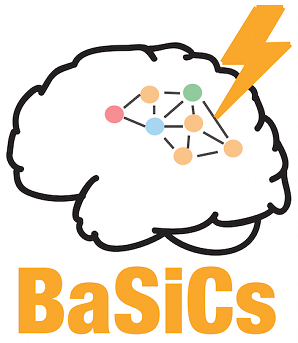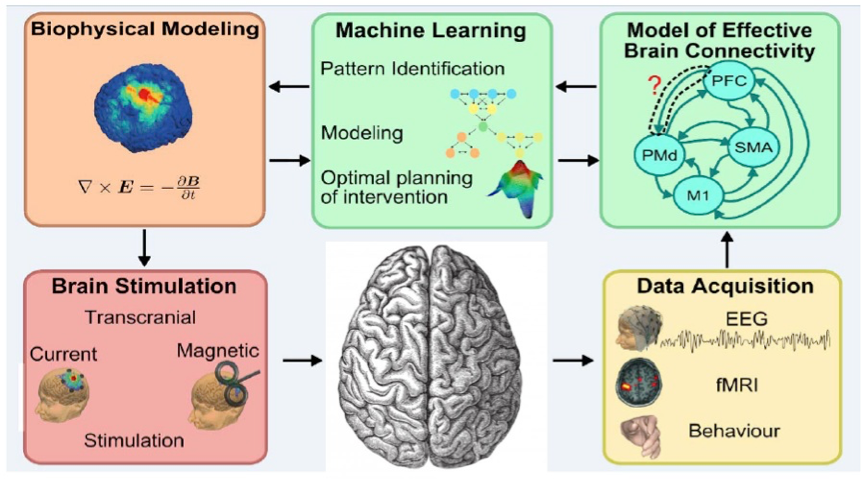
Non-invasive transcranial brain stimulation (NTBS) is used to restore brain function after injury, treat psychiatric disorders, and to boost normal cognitive abilities. The basic mechanisms of NTBS are still poorly understood and people show highly variable responses to NTBS. Trait-related and state-related determinants contribute to this variability.
The BaSiCs project aims at increasing the efficacy of NIBS by adjusting stimulation parameters to individual anatomical and functional differences using
Our interdisciplinary team pursues two lines of research:
(i) Biophysically adjusted NTBS: We perform advanced modelling of the electrical fields that are induced by NTBS in individual brains. We use this information to adjust intensity and spatial arrangement of NTBS to optimally target the cortical network of interest.
(ii) State-informed NTBS: We use electroencephalography (EEG) and functional magnetic resonance imaging (fMRI) to identify the spatiotemporal signatures of functional and dysfunctional brain states at an individual level. EEG and fMRI also enable us to trace the dynamic expression of these “state signatures” during NTBS. We use this information to adapt NTBS to these signatures in the healthy and diseased human brain.

The BaSiCs group exploits functional brain mapping, electrical field modelling, and machine learning to push the frontiers of Non-invasive
Transcranial Brain Stimulation (NTBS) as interventional tool to improve the function of human brain networks







